Why Is My Google AdWords Bid So High?
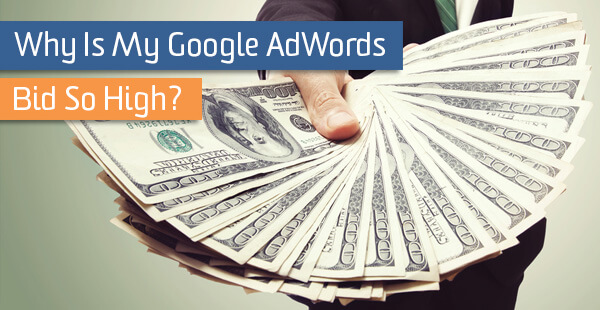
We’ve all been there.
We’ve crunched the numbers, made sacrifices to the PPC gods, consulted our Magic 8 Balls and determined the perfect bid for each one of our keywords.
Enough to be competitive in our auctions, but not so much we’re bankrupting the company and rummaging through couch cushions to cover our AdWords payments.

You, getting ready to set your bids
But when the moment comes to check and confirm to ourselves how smart it was to bid that amount, we notice something unusual: the bid and cost-per-click are far higher than anticipated, severely limiting our ad’s reach and causing us to glance nervously at our living room sofa.

You, reviewing your bids & CPCs
What happened? We had it in the bag!
Often, it comes down to a case of “setting it and forgetting it.”
Let’s run through a few things that might be jacking up our bids.
1. Location/Device/Time of Day/Audience Bid Adjustments
One of the ways AdWords allows us to be programmatic in how we reach users is through bid adjustments, options to increase or decrease bids based on certain factors.
We can do this based on where a user is located, what device they are using, and what time of day they are in, and what kind of remarketing audience they fall into. However, they can be easy to forget about since they work in the background and don’t appear in the main reporting interface.
To check the location, device, and time of day bid adjustments, choose the “Settings” tab on the main, horizontal navigation bar. Right below that should be buttons for “Location,” “Ad Schedule,” and “Devices.” There will be a column called “Bid adj.” and that will tell you whether you are adjusting your bid for this factor.

For example, if you see +50% next to “Mobile devices with full browsers,” you are saying: “If the user triggering the keyword is on a mobile device, take half of my initial bid and add it to itself.” In this example, a $1 bid becomes $1.50.
This might not seem like much, but if your bids are high to begin with, it can quickly add up, especially if you are stacking bid increases on top of each other. When several bid adjustments are used, the system multiplies them together to get a final bid adjustment up to 900%. If you’re bidding $15, and you have stacked bid adjustments that multiply to 900%, you’re now bidding $150.
I imagine many advertisers who didn’t do this intentionally would react like this:

You can see active bid adjustments under the “Settings” tab and under a column called “Active bid adj.” This will give you access to a calculator that will multiply all of the potential adjustments you have set up.
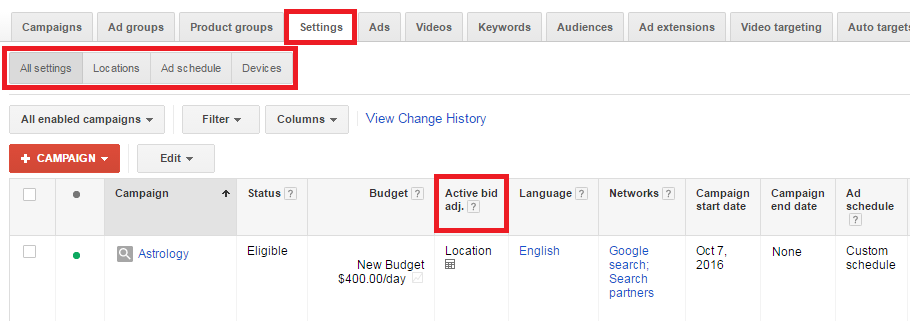
Additionally, you need to check if you’re using bid adjustments on your remarketing audiences, as this can further compound the issue. Check the “Audiences” tab to doublecheck.
2. Automated Rules
Automated rules are great; they give us freedom from boring, routine account maintenance and simplify tasks like bidding, giving us more time to do fun activities like rock climbing:

However, they can be easy to forget about, especially if you disabled email alerts. To see whether automated rules are altering your bids, look on the lefthand side of the interface for a section called “Bulk Operations.” The first header should say, “Automated Rules.”
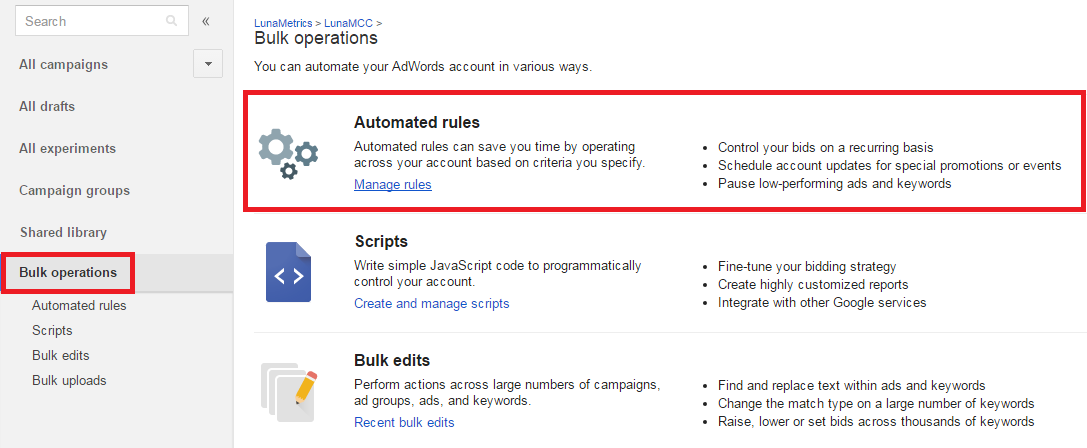
In here, you will see a list of the automated rules in your account, what they do, and how often they run. Check to make sure a rule isn’t bumping your bids beyond what you are comfortable paying.
3. Scripts
Like automated rules, scripts free us from the boring tasks associated with managing an AdWords account. And like automated rules, scripts also lurk in the shadows, working diligently behind the scenes, meaning they are easy to forget about.
To make sure you don’t have scripts that are raising bids under your nose, head back to “Bulk Operations” and check your scripts list.
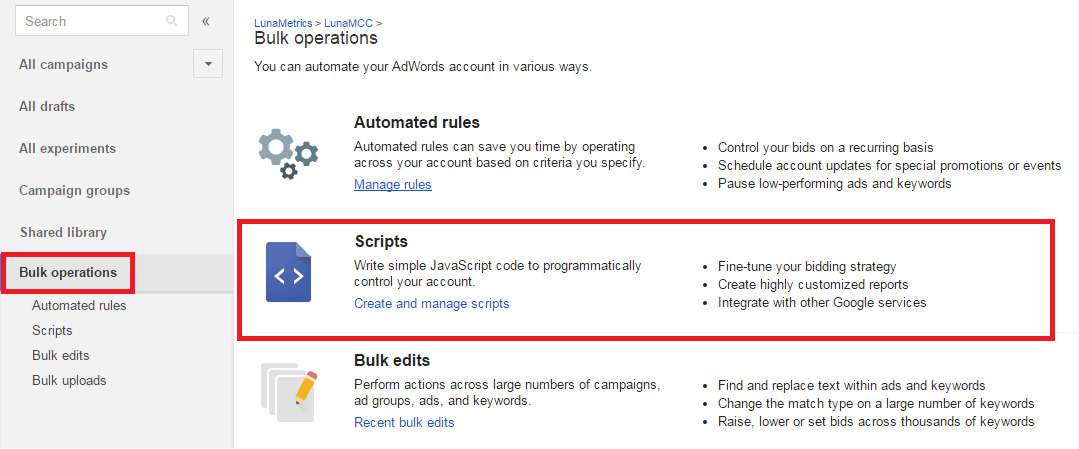
If the script is poorly named, you will need to go in to figure out what is happening when the script runs. Pause the script if you find that it is raising bids beyond your liking.
4. Bid Strategies
Portfolio bid strategies can be very useful in accomplishing goals across several different campaigns. However, if they are not set up according to the constraints and goals of your particular account, they can cause your bids to go beyond your wishes.
Your portfolio bid strategies live in the “Shared Library” section of AdWords. The two strategies you need to keep an eye on are “Target Outranking Share” and “Target Search Page Location.”
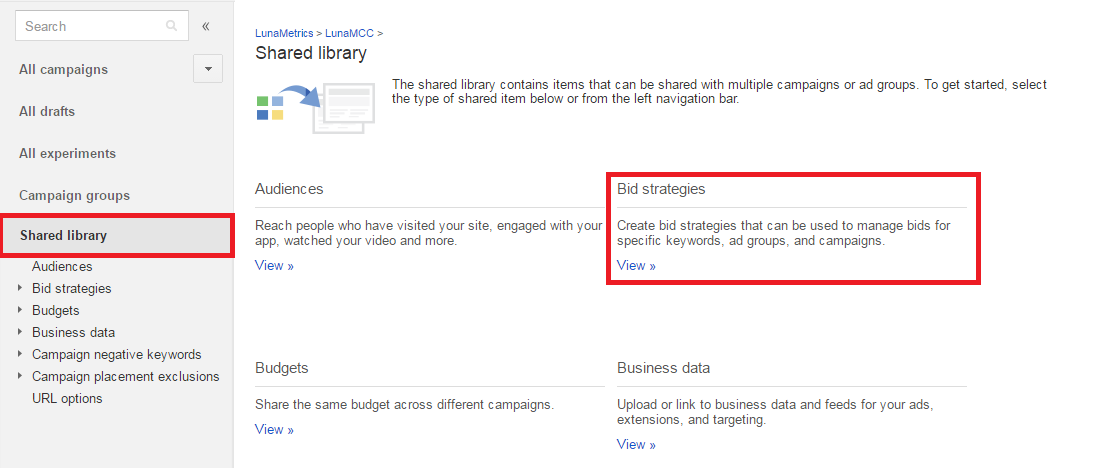
Target Outranking Share looks to outrank a certain competitor domain a certain percentage of the time, while Target Search Page Location tries to target either the first page of the search results or the top of the search results. Both of these can be useful, particularly in a competitive industry.
The most common mistake I see is forgetting to set a maximum bid limit. If you don’t set one, and suddenly you have more competitors or your competitors decide to be more aggressive with their bidding, your bids and CPCs will skyrocket and you will look like this:

Make sure you have a limit set to the maximum you are comfortable paying, while also being aware of those bid adjustments we went over earlier.
Remember, each of these features can be very useful, if used deliberately and with care. If you “set and forget,” you might end up with bids and CPCs that are too high for your budget, limiting your traffic and hampering your results. So go forth, and get the results you deserve!



